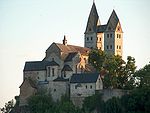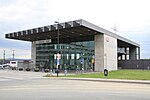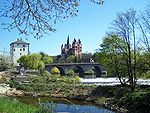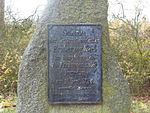St. Lubentius, Dietkirchen
Basilica churches in GermanyRoman Catholic churches in HesseRomanesque architecture in Germany

The church of St Lubentius in Dietkirchen, now part of Limburg an der Lahn, Hesse, Germany, was the most important church of the region until the 13th century. Located on top of a rock outcrop on the west bank of the river Lahn, it holds relics of St Lubentius, who according to the Gesta Treverorum worked in the area as a missionary in the fourth century. Today, the former collegiate church serves as the Catholic parish church of Dietkirchen, while its former chapel Dreifaltigkeitskapelle is the Protestant parish church. The church is a Romanesque basilica, mostly built in the 11th and 12th centuries, with a double tower at the west end.
Excerpt from the Wikipedia article St. Lubentius, Dietkirchen (License: CC BY-SA 3.0, Authors, Images).St. Lubentius, Dietkirchen
Lahnstraße,
Geographical coordinates (GPS) Address External links Nearby Places Show on map
Geographical coordinates (GPS)
| Latitude | Longitude |
|---|---|
| N 50.402962 ° | E 8.096382 ° |
Address
St. Lubentius
Lahnstraße
65553
Hesse, Germany
Open on Google Maps








